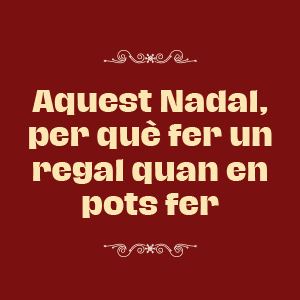Exhibitions
The Mapfre Foundation inaugurates "French taste" and "Jorge Ribalta. Everything is true"

The Mapfre Foundation inaugurates The French Taste and Jorge Ribalta on 11 February. Everything is true. Fictions and documents 1987-2020, two exhibitions that open the 2022 season and can be visited until May 8.
The exhibition The French Taste , a transversal project that covers such an extensive historical period that it cannot be understood without its historical context. Curated by Amaya Alzaga, the exhibition also addresses aspects that make this evolution visible, such as diplomatic relations, the history of collecting or the construction of national identities. Through numerous paintings (45), drawings (16), sculptures (8), sumptuous and decorative pieces of art (31) and everyday objects, the exhibition aims to delve into the evolution of French taste. in our country, so far only studied on a one-off basis.
The French taste is a project that, far from being constructed as a closed discourse, aims to open new lines of knowledge regarding the presence of Gallic art in Spain during the seventeenth, eighteenth and nineteenth centuries, a period in which the two cultures they intermingle and remain intimately related. It is a cross-border phenomenon that mixes Gallic culture and aesthetics with Spanish. It begins in the 17th century, when Louis XIV's France replaced Spain as a political and economic power. It is then that the absolutist policy of the monarch floods the art scene to propagate the magnificence of image and power. A classicist style is imposed, marked by the founding in Paris of the Royal Academy of Painting and Sculpture (1648) and the royal manufactures, which control artistic production according to the established language. The French taste developed and became official throughout the 18th century with the arrival of the Bourbons on the Spanish throne, spread during the 19th century and reached the beginning of the 20th. The French become synonymous with refinement, with the choice of noble materials in impeccably executed works. Pieces by Gallic artists who either reside in France or come to the Iberian Peninsula to work at court are acquired from Spain.
The nearly one hundred and ten works on display all come from public and private collections on the Iberian Peninsula, and are therefore works of Spanish heritage. The exhibition has been conceived from the moment when French pieces of art began to arrive in our country, when France became a model of European taste, and closes at the stage when the reverse phenomenon occurs, when It is Spain that has become the focus of attraction for French culture, due to the interest it arouses in the romantic imagination throughout the nineteenth century.
This project is the result of in-depth research, which has brought to light works that had previously been considered missing, made new assignments and restored a good number of the pieces presented. The exhibition has the support of important Spanish institutions such as the National Library of Spain, the Museum of Fine Arts of Bilbao, the National Museum of the Prado, the National Museum Thyssen Bornemisza, the Museum of Romanticism, the Museum of Arts Decorative or National Heritage, as well as outstanding private collections, whose works are presented for the first time in an exhibition.
For its part, the Jorge Ribalta project. Everything is true. Fictions and documents 1987-2020 is the first retrospective exhibition by Jorge Ribalta and covers the evolution of an illusionist photography of stagings started in 1987, until the "documentary photography", whose starting point is place in 2005 and continues to practice today. Curated by Valentín Roma, based on the large ensembles and a serial logic, the exhibition, chronological assembly, brings together 14 series of works between the late 1980s and 2020. It also includes a room with 4 projections and documentary material that offer a wide panorama of the artist's work.
Ribalta's images - made mainly in black and white with analogue film - are the result of rigorous and nuanced observation. With his work, the artist takes a tour of the changing landscapes of late capitalism of our time. With his work, the author makes not only a document, but also a critique, not without humor, of the culture and cultural artifacts with which we live and speaks transversally of art, politics, economics, work and history.








